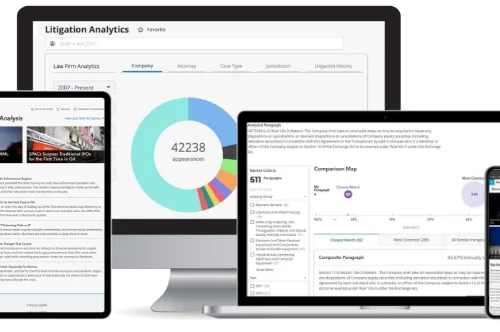The Comprehensive Update on Philips CPAP Litigation
The Initial Recall and Its Implications
In June 2021, Philips issued a voluntary recall for certain CPAP, BiPAP, and ventilator devices, citing potential health risks from sound abatement foam that could degrade and be inhaled or ingested by users. This recall affected millions of devices globally and sent ripples through the healthcare community.
The implications of the recall were significant and multifaceted:
- Patient Safety Concerns: The primary concern was the potential for users to be exposed to toxic and carcinogenic effects from the degraded foam particles and off-gassing chemicals.
- Treatment Disruption: Many patients relied on these devices for essential treatment of sleep apnea and other respiratory conditions. The recall meant that they had to seek alternative therapies or risk continuing to use potentially harmful devices.
- Financial Impact: The recall not only imposed financial burdens on Philips due to the costs associated with the recall and remediation efforts but also on patients who faced unexpected expenses for device replacement or alternative treatments.
- Regulatory Scrutiny: The recall drew attention from regulatory bodies, including the FDA, which heightened oversight and may lead to more stringent regulations for medical device manufacturers in the future.
The recall set the stage for a complex legal landscape as affected users and healthcare providers sought accountability and compensation for the alleged harm caused by the devices.
Health Risks Associated with the Devices
The Philips CPAP litigation has brought to light a range of health risks that users of the recalled devices may face. These risks stem from the degradation of the polyurethane foam used for sound abatement, which can release potentially harmful particles and gases.
- Chemical Exposure: Users may inhale or ingest toxic chemicals released by the foam, leading to various health issues.
- Respiratory Problems: The particles can contribute to respiratory issues, including asthma and other lung conditions.
- Cancer Concerns: There is a potential risk of carcinogenic effects due to long-term exposure to certain chemicals emitted by the foam.
Patients who have experienced adverse health effects from using the Philips CPAP devices are seeking legal recourse.Local Law Firms specialize in providing legal assistance to individuals affected by dangerous drugs and medical devices, fighting for justice and offering resources to affected families nationwide.
Key Allegations Against Philips
The litigation against Philips centers on several key allegations that have been brought forward by plaintiffs. These allegations form the basis of the legal challenges facing the company and highlight the severity of the issues at hand.
- Defective Design: Plaintiffs claim that the CPAP, BiPAP, and ventilator devices were defectively designed, leading to potential health risks.
- Failure to Warn: It is alleged that Philips failed to adequately warn users and the medical community about the risks associated with the foam degradation in their devices.
- Negligence: The lawsuits suggest that Philips acted negligently in the design, manufacture, and maintenance of the affected devices.
- Breach of Warranty: There are claims that Philips breached express and implied warranties by providing devices that were not fit for their intended use.
These allegations are serious and suggest a pattern of behavior that could have put thousands of users at risk. The legal proceedings aim to hold Philips accountable for these purported actions and seek compensation for affected individuals.
Legal Proceedings and Case Developments
Class Action Lawsuits and Individual Claims
The Philips CPAP litigation has seen a surge in both class action lawsuits and individual claims. These legal actions represent a collective response from users who have experienced adverse health effects allegedly due to the recalled devices. Class action lawsuits allow for a large group of plaintiffs to consolidate their claims, potentially streamlining the legal process and reducing costs for individuals.
- Class Action Lawsuits: These are filed on behalf of a group of individuals who have suffered similar harm. They aim to hold Philips accountable for the widespread impact of their devices.
- Individual Claims: Filed by single plaintiffs, these claims often detail specific personal injuries and seek compensation tailored to individual circumstances.
The legal journey for affected users involves navigating through a complex system of filings, evidence gathering, and court proceedings. Legal fees and potential compensation are contingent upon the outcome of the cases, with factors such as negligence and the severity of injury playing a crucial role in the determination of awards.
Significant Court Rulings and Case Milestones
The Philips CPAP litigation has seen a series of significant court rulings and case milestones that have shaped the trajectory of the legal battle. Notably, the multidistrict litigation (MDL) process consolidated numerous cases, streamlining the pretrial proceedings and enabling more efficient case management. This consolidation has been pivotal in addressing the sheer volume of claims and ensuring a uniform approach to common issues.
Key milestones include the establishment of bellwether trials, which serve as test cases to gauge jury reactions and set the tone for potential settlements. These trials help both parties understand the strengths and weaknesses of their arguments in a real-world setting. Additionally, the litigation has witnessed critical motions regarding the admissibility of expert testimony, which can significantly influence the outcome of the cases.
The court has also issued important rulings on the scope of discovery, determining the extent to which Philips must disclose internal documents. These decisions have a profound impact on the plaintiffs’ ability to build their cases. As the litigation progresses, each ruling adds a new layer to the complex legal landscape that plaintiffs and Philips must navigate.
The Role of the FDA in the Litigation Process
The involvement of the Food and Drug Administration (FDA) has been pivotal in the Philips CPAP litigation. As the regulatory body responsible for ensuring the safety and efficacy of medical devices, the FDA’s actions have significant implications for the legal proceedings.
- The FDA’s initial safety communication and subsequent recall request set the stage for the widespread awareness of the potential risks associated with the Philips CPAP devices.
- Investigations conducted by the FDA into the reported health risks have provided critical evidence that has been utilized in the lawsuits.
- The agency’s ongoing oversight and updates have kept both the public and healthcare professionals informed, influencing the scope and direction of the litigation.
The FDA’s role extends beyond the initial recall, as it continues to monitor Philips’ compliance with regulatory requirements and the effectiveness of the company’s remediation efforts. This oversight is crucial in determining the adequacy of Philips’ response to the crisis and may influence the outcomes of the lawsuits.
Impact on Patients and Healthcare Providers
Patient Testimonies and Personal Experiences
The voices of those directly affected by the Philips CPAP devices have echoed throughout the litigation process. Personal accounts have shed light on the severity of the situation, with many users reporting a range of adverse health effects attributed to the recalled devices. These testimonies have not only provided a human perspective to the legal proceedings but have also been instrumental in shaping the course of the litigation.
- Users have reported experiencing symptoms such as respiratory issues, headaches, and other health complications.
- Some have spoken about the disruption to their daily lives, emphasizing the dependency on these devices for a good night’s sleep.
- The emotional and psychological toll, including stress and anxiety over potential health risks, has been a recurring theme in patient narratives.
These personal experiences have underscored the urgency for resolution and accountability, and have been pivotal in rallying support for those affected. The collective impact of these stories has also influenced public opinion and drawn attention to the broader implications of the recall.
The Response of the Medical Community
The medical community has been actively engaged in responding to the Philips CPAP litigation, with healthcare providers facing the challenge of addressing patient concerns while ensuring continuity of care. Physicians and sleep specialists have been at the forefront, providing guidance on alternative therapies and closely monitoring patients for any adverse effects related to the recalled devices.
- Patient Safety Prioritization: Medical professionals have prioritized patient safety, often revisiting treatment plans and exploring alternative CPAP machines or therapeutic options.
- Information Dissemination: There has been a concerted effort to disseminate information regarding the recall, with hospitals and clinics issuing notices and setting up dedicated helplines to address patient queries.
- Clinical Oversight: Enhanced clinical oversight has been implemented, with doctors conducting additional follow-ups and health checks to identify potential complications early.
The response has also involved collaboration with regulatory bodies to understand the scope of the issue and to contribute to the development of industry-wide safety protocols. This collective effort underscores the commitment of the healthcare sector to patient well-being amidst a complex legal and medical situation.
Long-Term Health Consequences for Affected Users
The Philips CPAP litigation has brought to light the potential long-term health consequences faced by users of the recalled devices. Many patients have reported a range of serious conditions that they attribute to their use of the defective CPAP machines, including:
- Chronic respiratory issues
- Increased risk of cancer
- Persistent headaches and migraines
- Cardiovascular complications
Medical experts have expressed concern that the exposure to degraded sound abatement foam, which can release toxic chemicals, may have lasting effects on patients’ health. The full extent of these health issues is still being investigated, with studies ongoing to determine the long-term impact on users’ well-being.
For those affected, the road to recovery may be long and fraught with uncertainty. The psychological toll of dealing with chronic health problems, coupled with the stress of participating in legal actions, cannot be understated. Support groups and patient advocacy organizations have become crucial in providing the necessary emotional and informational support to navigate this challenging period.
Philips’ Corporate Response and Remediation Efforts
Recall Execution and Device Replacement Programs
In the wake of the recall, Philips initiated a comprehensive program to address the issues with its CPAP devices. The company’s execution of the recall and the subsequent device replacement programs have been critical in mitigating the impact on patients relying on these devices for sleep apnea treatment.
The recall process involved several key steps:
- Identification of affected devices and notification of users and healthcare providers.
- Provision of detailed instructions for the safe return or repair of the recalled devices.
- Deployment of a streamlined system for registering affected devices and facilitating the replacement process.
Philips has also established a customer service framework to assist users throughout the recall, offering support and addressing concerns. The effectiveness of these measures is under scrutiny as the company works to restore trust and ensure patient safety.
Public Relations Strategies and Stakeholder Communication
In the wake of the CPAP litigation, Philips has had to navigate a complex public relations landscape. The company’s approach to communication has been multifaceted, aiming to address the concerns of various stakeholders including patients, healthcare providers, investors, and regulatory bodies.
- Transparency: Philips has made efforts to be transparent about the issues, providing regular updates on the recall process and the steps being taken to resolve the problems.
- Customer Support: A dedicated customer service team was established to handle inquiries and provide support to affected users.
- Stakeholder Engagement: The company has engaged with stakeholders through multiple channels, including press releases, social media updates, and direct communication to keep all parties informed.
Philips’ public relations strategy has also included damage control measures, attempting to rebuild trust and mitigate the negative impact on the brand’s reputation. The company has been proactive in sharing information about the remediation process and has worked to reassure the public and healthcare professionals of its commitment to safety and quality.
Changes in Manufacturing and Quality Assurance
In response to the CPAP litigation, Philips has undertaken significant changes in its manufacturing processes and quality assurance protocols. These reforms are aimed at addressing the defects that led to the recall and ensuring that future products meet the highest safety standards.
- Enhanced Quality Control: Philips has introduced more rigorous testing and inspection procedures throughout the manufacturing process.
- Supplier Scrutiny: The company is now more closely monitoring and auditing its suppliers to ensure that all materials meet strict quality criteria.
- Staff Training: Employees involved in production and quality assurance have received additional training to better identify and mitigate potential risks.
Philips’ commitment to these changes is not only a direct consequence of the litigation but also a reflection of the company’s dedication to patient safety and product reliability. The updated practices are expected to restore consumer trust and position Philips as a leader in medical device safety.
Future Implications and Industry Repercussions
Regulatory Changes and Increased Oversight
In the wake of the Philips CPAP litigation, regulatory bodies have been prompted to re-evaluate and strengthen oversight mechanisms. This has led to a series of changes aimed at ensuring patient safety and preventing similar incidents in the future.
- Enhanced Scrutiny: Regulatory agencies, such as the FDA, have increased their scrutiny of medical devices, particularly those related to respiratory care. This includes more rigorous pre-market testing and post-market surveillance.
- Reporting Requirements: Manufacturers are now subject to stricter adverse event reporting requirements, ensuring that potential risks are communicated to authorities in a timely manner.
- Guidance Documents: New guidance documents have been issued, providing clearer expectations for medical device safety and performance standards.
These measures are designed to foster a culture of transparency and accountability within the medical device industry. By imposing stricter regulations and oversight, authorities aim to protect public health while maintaining the trust of consumers and healthcare professionals alike.
Lessons Learned for Medical Device Manufacturers
The Philips CPAP litigation has served as a stark reminder of the critical importance of product safety and proactive risk management in the medical device industry. Manufacturers are now re-evaluating their design, testing, and quality control processes to ensure that patient safety is at the forefront of product development.
Key lessons include:
- Vigilant Monitoring: Continuous monitoring of product performance post-market is essential to detect potential issues early.
- Transparent Communication: Open lines of communication with regulatory bodies, healthcare providers, and patients are crucial for maintaining trust and facilitating swift action if problems arise.
- Investment in Quality: A renewed focus on investing in quality assurance systems can prevent costly recalls and protect brand reputation.
- Regulatory Compliance: Staying abreast of changing regulations and ensuring compliance can mitigate legal risks and enhance patient safety.
These insights are driving a shift towards more robust safety protocols and a culture of transparency within the industry, potentially leading to higher standards of patient care and trust in medical technologies.
Predictions for the Outcome of Ongoing Litigation
As the Philips CPAP litigation unfolds, legal experts are formulating predictions about the potential outcomes. The complexity of the case, involving numerous plaintiffs and a range of allegations, suggests that a definitive resolution may take time. However, several scenarios are emerging as likely possibilities.
- Settlement Agreements: Philips may opt for settlement agreements to expedite resolution and manage financial exposure. This could involve compensating affected users and addressing their health concerns without admitting liability.
- Continued Litigation: Should Philips decide to contest the allegations vigorously, the litigation could extend over several years, with appeals and counter-appeals adding to the timeline.
- Regulatory Repercussions: Depending on the litigation’s findings, Philips could face stricter regulatory scrutiny and potential sanctions, which may prompt industry-wide changes.
- Public Trust and Market Share: The company’s reputation and market share could be significantly impacted, influencing Philips’ strategies and operations moving forward.
Ultimately, the outcome will hinge on the legal merits of the cases, the evidence presented, and the decisions of the courts. Stakeholders across the industry are closely monitoring the situation, aware that the ramifications will likely extend beyond Philips to affect the broader medical device sector.





